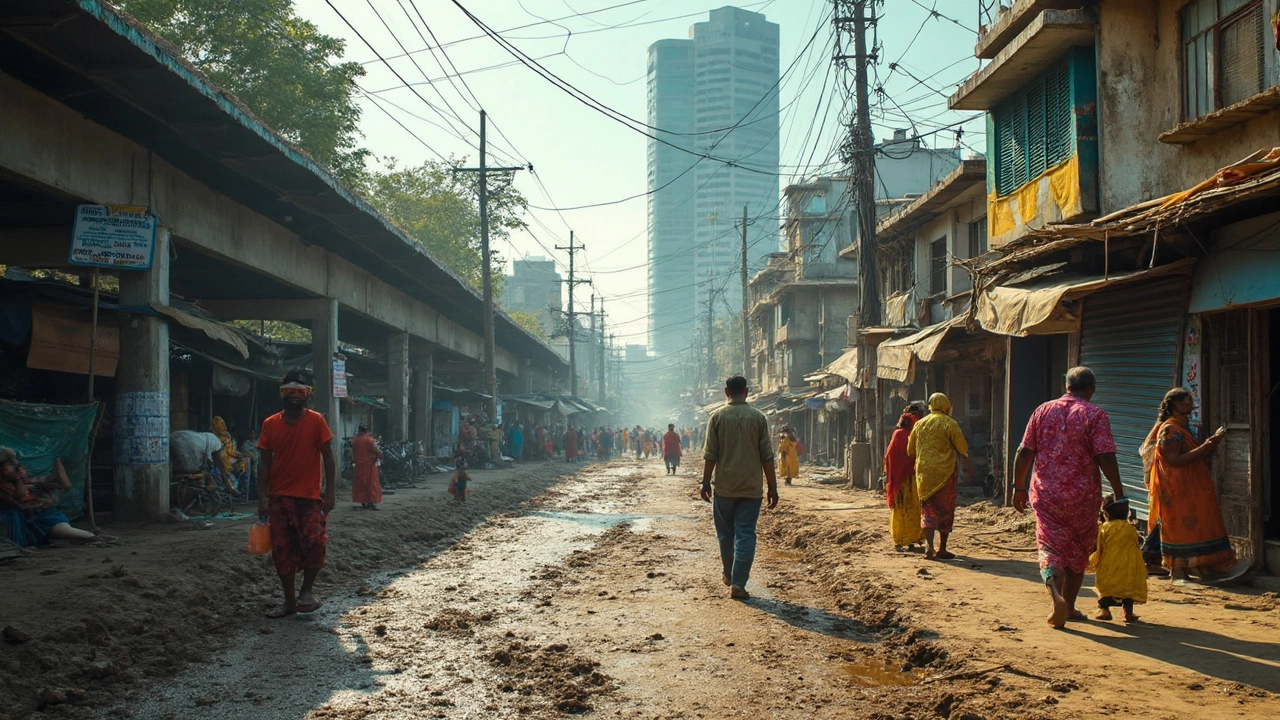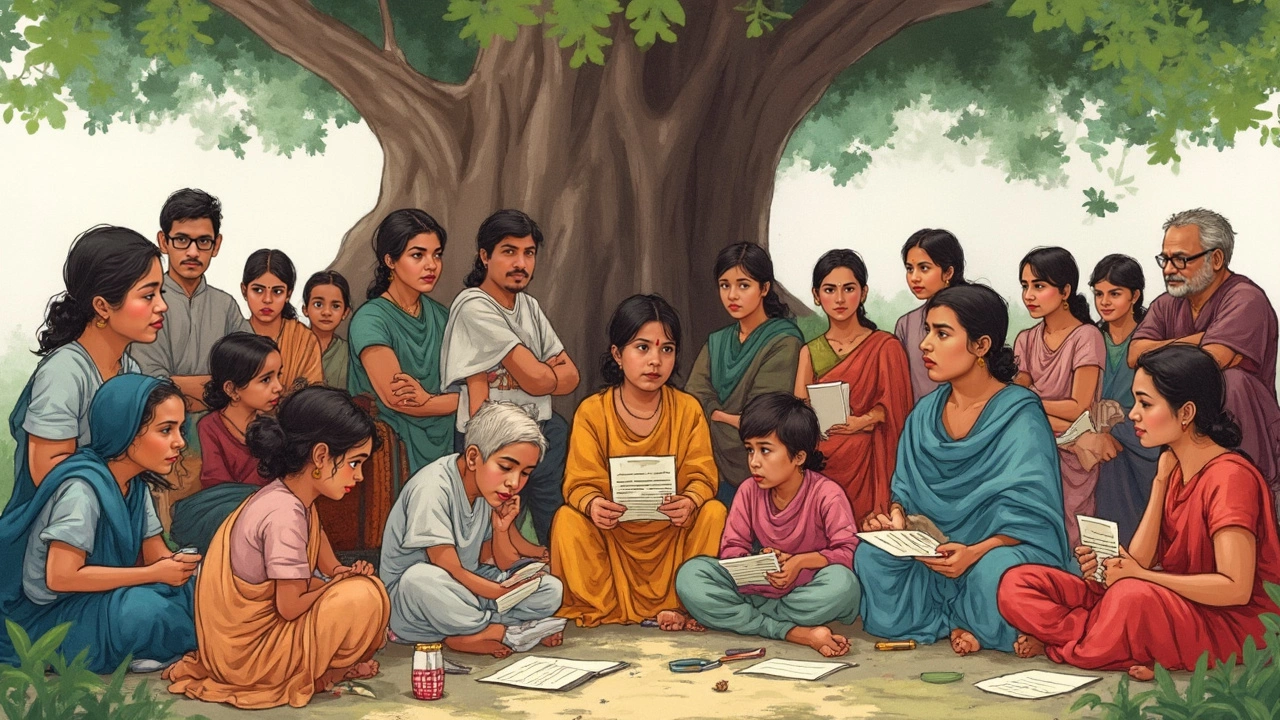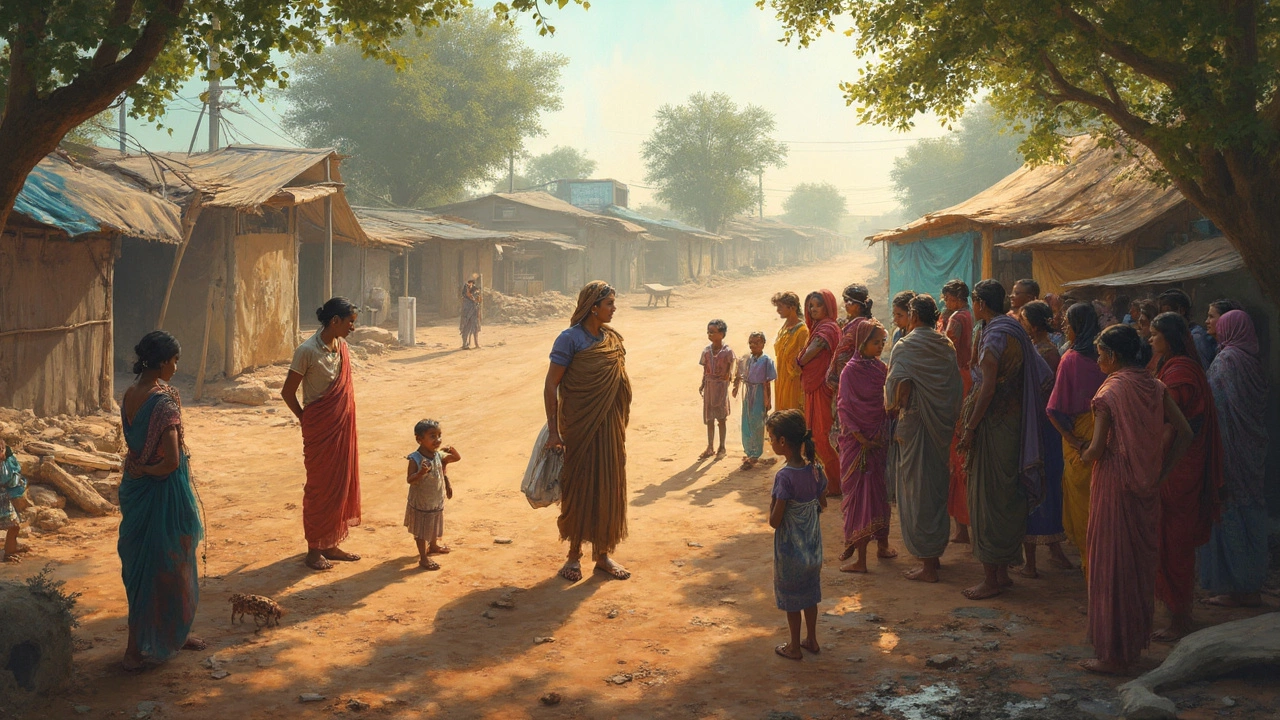
Take a walk in any midsize Indian town today, and something’s off. It’s not just the traffic or the packed buses. It’s the hustle without a safety net. People are working hard, but ask around—you’ll hear worries about job security, rising bills, and getting good healthcare without breaking the bank.
Here’s a fact that stings: more than 90% of workers in India are in the informal sector. That means zero health insurance, no official work contracts, and basically, if you lose your job, you’re on your own. And while swanky malls might be popping up in cities, most neighborhoods still juggle power cuts and patchy water supply.
This gap between progress and everyday problems is what people feel most. If you’re curious what India is really lacking right now, look closer at what’s missing for the average family trying to build a better life. Getting practical—let’s break down where the cracks show, and what can actually help fix them.
- Missing Middle-Class Security
- The Real Skills Divide
- Healthcare: Access Vs. Affordability
- Everyday Infrastructure Gaps
- Role Models Who Change the Game
Missing Middle-Class Security
India’s middle class loves to hustle. But what most people don’t talk about is how shaky their safety net really is. Just because you earn enough to shop online and pay EMIs doesn’t mean you’re safe from sudden setbacks. According to a recent Pew Research report, the pandemic pushed around 32 million Indians out of the middle class and back into poverty. That kind of rollercoaster is a real wake-up call.
Stable jobs are hard to find, and permanent ones are even rarer. Contract work, gig jobs, and short-term freelancing rule the day. Most families can't count on things like paid sick leave or employer health coverage. Losing a job even for a couple of months can throw a whole family’s finances into chaos.
Household savings are shrinking. The RBI reports household savings dipped to an all-time low of around 5.1% of GDP in 2023, compared to almost 15% a decade ago. This means most folks have little buffer if something goes wrong—a medical crisis, job loss, or unexpected bills can hit really hard.
Now, here’s what you can actually do to protect yourself if you’re part of India’s so-called 'secure' middle class:
- Don’t skip basic health or life insurance, even if it feels like yet another bill. Losing all savings to hospital bills isn’t just a story—it’s common.
- Try setting up a true emergency fund, even if it’s just a small amount to start with. Three to six months of expenses saved up makes a difference.
- Keep upskilling. If your entire work life hangs on one job or one skill, it’s risky. Find short courses or certifications online.
The big keyword here is India—if you look at what the everyday middle-class person is missing, security tops the list. Until stable jobs, decent savings, and real insurance become the norm, the fear of slipping back will keep people on edge, no matter how hard they climb.
The Real Skills Divide
There’s a big gap between what students learn in school and what jobs really need. It’s not a hidden secret—ask any hiring manager, and they’ll say the hardest thing is finding people with the right skills, not just degrees. Data from the India Skills Report 2024 says only about 51% of graduates are considered “employable.” So half the young crowd with degrees can’t land jobs they want.
A lot of this is because most courses focus on theory, not real-world problem-solving or things like communication, coding, or fixing machines. If you look at popular fields—engineering, for example—unbelievably, only around 20% of engineering grads get hired for core jobs related to their degree.
Check out some numbers that show the gap:
| Field | Employability Rate |
|---|---|
| Engineering | ~54% |
| Arts | ~41% |
| Commerce | ~46% |
| Overall Graduates | ~51% |
This mismatch leaves millions underemployed or stuck with jobs outside their training. It hurts people at every level: workers, companies, and the whole country’s progress. The government is trying to address this with schemes like Skill India, but most training programs miss digital skills or hands-on learning that today’s market needs.
If you’re a student or job changer, here are some practical tips:
- Don’t just chase degrees—pick up certifications for things like Python, Excel, or digital marketing.
- Use free learning tools. Websites like Coursera, Khan Academy, and Skillshare have loads of practical courses.
- Find internships or apprenticeships, even unpaid, to gain real work experience.
- Join clubs, workshops, or online competitions—they help with teamwork and show future bosses you’re proactive.
This isn’t just about getting a job. Building these skills unlocks more options and security, especially in unpredictable times. Close the ‘skills divide’ and you get a stronger shot at life status that actually feels stable.

Healthcare: Access Vs. Affordability
Walk into any government hospital in India, and you’ll probably wait in line for hours. The treatment might be free or cheap, but getting there is a hassle if you live outside the city. Now try a private hospital—the wait is shorter, the care often better, but the bill can burn a hole in your pocket. This is the tug-of-war between access and affordability of healthcare in India right now.
Here’s something everyone should know: India spends only around 2% of its GDP on public health. Compare this with countries like Brazil or China, which pump in more. Even with government insurance schemes like Ayushman Bharat covering over 500 million people, there’s still a gap because many treatments, medicines, and hospitals aren’t included or are out of reach in rural areas.
Let’s break it down with a quick look at real numbers—
| Healthcare Stat | India | WHO Recommended |
|---|---|---|
| Doctors per 1,000 people | 1.1 | 1.0+ |
| Public health spend (as % of GDP) | 2.1% | 5% |
| Out-of-pocket spending | 55% | <20% |
| Hospital beds per 1,000 people | 1.7 | 3.5+ |
More than half of what people spend on health comes straight from their pocket. That’s why a trip to the hospital can drag an entire family below the poverty line overnight. Even with efforts to build insurance programs, high medicine costs, lack of digital records, and fewer doctors in remote towns widen the gap.
If you want to make the most of what's out there, here's what helps:
- Check if you or your family are eligible for government health plans—ask your local health worker, don’t just rely on rumors.
- Use online apps like Aarogya Setu or eSanjeevani for free doctor consultations if travel is tough.
- Always keep copies of your prescriptions and basic medical history—digital or hard copy—so you don’t start from scratch at every hospital.
- Push local leaders to set up health camps in your area. When enough people ask, action usually follows.
The government is ramping up "health and wellness" centers, but the rollout is slow. For now, the real fix will come from building stronger local systems and making sure people get real info—because knowing where to find affordable healthcare can honestly be a lifesaver in India.
Everyday Infrastructure Gaps
If you ask anyone stuck in a summer traffic jam, or someone waiting for water delivery, they’ll tell you: India’s roads, public transport, and basic utilities are way behind what people actually need. It’s not just a city problem—villages, and even smaller towns, feel it every day.
Here’s something that hits hard: as of 2023, nearly 30% of rural homes still don’t have piped water. Many families spend half an hour or more just fetching water. Power cuts aren’t rare, especially when it gets hot. Load shedding can last hours in smaller towns. For folks who work from home, study, or run a local shop, this isn’t just annoying—it's a real obstacle to getting work done and raising your life status.
And let’s talk roads. Out of India’s four million kilometers of rural roads, a good chunk turn to mud during monsoons. In cities, metro work and potholes mean traffic snarls that eat up hours every week. If you count the time lost, it piles up quickly—literally months wasted every year for an average commuter in metros like Bengaluru or Mumbai.
So what can actually help? Here’s what’s worked in pockets, and what people push for:
- Fixing basics first—solid waste management in your neighborhood can cut down flood risks during the rains.
- Pushing local leaders for working streetlights and better roads can make a huge difference, even if it feels small.
- Community rainwater harvesting—some neighborhoods in Chennai and Pune swear by it because it saves them money, especially in dry spells.
- Supporting women’s groups who lobby for better public toilets—this matters more than most people realize, especially for safety and health.
Progress is slow, but it starts with people speaking up about what’s missing, not just hoping for a big government fix. Ask around, see what your area truly lacks, and see if there’s a group already pushing for the same thing. Sometimes that’s all it takes to move things along.

Role Models Who Change the Game
When you think of people actually shifting the needle on India’s life status, don’t just imagine billionaires or cricket stars. Everyday trailblazers—some you might not even know by name—are making things work where big systems still lag.
Take Arunachalam Muruganantham, known as the “Padman,” who built a low-cost sanitary pad machine and taught women in villages how to use it. His work has helped boost health and confidence for girls who otherwise missed school during their cycles. Not just an icon, but a solution-bringer who filled a healthcare and social gap with something practical and cheap.
Then there’s Dr. Devi Shetty, who made heart surgeries way more affordable through Narayana Health. He disrupted pricey hospital culture by bringing costs down for regular families—his hospitals perform around 30-40 heart surgeries daily, yet keep fees a fraction of what private hospitals charge. Now, more families see survival as a real shot, not just for the rich.
Check out these quick numbers showing the impact of such role models:
| Role Model | Main Contribution | People Impacted (approx.) |
|---|---|---|
| Arunachalam Muruganantham | Affordable menstrual hygiene for rural women | 1 million+ women |
| Dr. Devi Shetty | Low-cost heart care through Narayana Health | Over 250,000 heart surgeries |
| Shaheen Mistri | Founder of Teach For India, improved education access | 38,000+ students yearly |
Role models offer a real answer to the question: what can be done, right now, without waiting for a whole system overhaul? If you’re wondering how to spot or even be one of these change-makers, here are a few signs:
- They use simple, doable ideas instead of waiting for government miracles.
- They focus on India's basic needs: better healthcare, education, clean water, jobs.
- They scale up what works by teaching or teaming up with regular people, not just experts.
If you find inspiration in these stories, spread the word or support someone like this in your community. Sometimes, all it takes is seeing one local problem solved for others to start believing real change is possible.